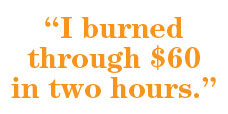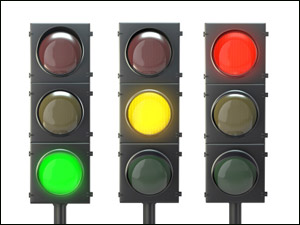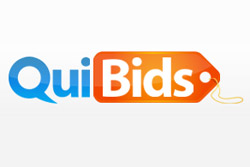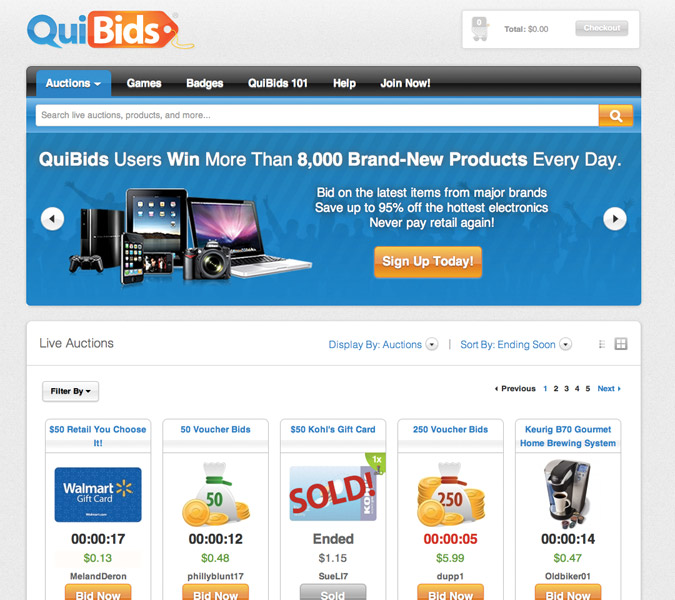Can You Trust Penny Auction Sites?
You’ve probably seen the ads for BeeZid.com, QuiBids.com or SkoreIt.com. These penny auction sites entice you to place bets on such drool-worthy gadgets as an iPod or MacBook Pro, seeming to promise deals of 90 percent off or better. However, as I found out by participating in numerous auctions over the span of an entire week, these sites are, at best, unregulated and unscrupulous. At worst, some could be illegal, especially if they use automated bids.
“The main problem with penny auction sites is that it is difficult to verify the legitimacy of the sites,” said Kyle-Beth Hilfer, an attorney in New York who studies tech trends. “Because these online auctions move so fast, consumers can lose a lot of money very quickly, even with legitimate sites.”
Anthony Giorgianni, an adviser for Consumer Reports, echoes this sentiment, saying the sites can be dangerous because you’ll need to visit frequently to win. There’s an illusion of imminent victory, but few people are actually victorious. And even when you do win, he says, the final cost of an item may be higher than the price you would find at an outlet store or through a legitimate auction.
The FTC Steps In
The Federal Trade Commission started investigating the legitimacy of penny auction sites last year, and issued a warning about how they work and the nasty surprises consumers may encounter. For instance, the FTC warns, “Many complaints about penny auctions involve late shipments, no shipments or shipments of products that aren’t the same quality as advertised.”
The government agency goes on to tell consumers to be wary of insecure payment options, hidden costs and misleading terms. Basically, consumers looking for a bargain will find that penny auctions are not all they’re cracked up to be.
Yet there’s a reason they exist. We all crave the latest shiny gadgets — Apple MacBook Pros, the Apple iPod, a Kindle Fire — whether we can afford them or not. And these companies know it. Interestingly, while such sites as QuiBids.com certainly include everything from golf clubs to knife sets, the most popular, front-page auctions are almost always related to gadgets. And discount prices are especially alluring for Apple products, which typically sell for a set price at every e-tailer.
Sign up to receive The Snapshot, a free special dispatch from Laptop Mag, in your inbox.
Bidding With Points = Danger
In my first foray into the wild world of penny auction sites, I lost about $20 before I even knew what I was doing. One of my early discoveries: You’re not actually bidding with pennies. This is an ingenious trick: You typically pay about 60 cents for each “penny” bid. But during the actually bidding process for an item, the bid amount goes up only one penny per click.
The sites seemed designed to encourage random clicking, not shopping for specific items. You can’t find items easily because there are so many links, colors and prices. You end up feeling like you have to just start clicking on any auction to win something.
Dangerous or Illegal?
My overall experience: Penny auction sites present an illusion of victory, but the reality is that you can spend hundreds and only win occasional auctions.
Hilfer says the ongoing legal debate regarding penny auction sites centers on whether skill or chance is the predominant factor in determining a consumer’s success. If chance is the main factor, these sites could be considered illegal gambling or illegal lotteries. So far, the case law has been inconclusive.
Yet even if there is skill involved, Hilfer says, these sites could still be dangerous because many in the past have employed deceptive techniques to increase bidding activity.
One argument suggests these sites are using “shill bids” generated by software programs. During an auction for a MacBook Pro, you might not be bidding against another human at all, but the site itself places bids to make it seem like there’s a flurry of activity, an attempt to make sure you bid often.
In the end, this is what makes penny auction sites so dangerous, and it may lead to their demise. The FTC may eventually move to regulate these sites, making sure every bidder has an equal chance (say, even if you are on a slow Internet connection). In the meantime, we would steer clear.
Beezid
After registering, I had to select a “bid package” — e.g., 30 bids for $27 and up to 1,000 bids for $550. There’s a tiny “skip” button that lets you bypass the bid offers. Every visitor gets 10 free bids.
There’s already a catch, though. The 10 free bids are good for only 24 hours. And you can only bid on “cherry” auctions, which are low-cost items such as a Darth Vader flashlight or a remote-control shark.
In a bidding war with “Rsilva,” we kept clicking on a $100 gift card for Ikea. Each time the counter came near zero, the other user would click bid at the last second.
Most items look like a bargain at first: laptops for $3, an iPad 3 for $20. Every auction heated up with just a few seconds left, and then lasted another hour because each bid increased the auction time.
On higher-ticket items, such as a Kindle Fire, there’s greater potential for a bargain. Recently closed auctions say lucky bidders won the $199 Fire for between $12 and $24. It cost me about $10 to bid on a Kindle Fire, which took roughly 15 minutes and 50 clicks. Then, in a flash, the final $23 price was posted. It surprised me because I hadn’t watched the auction the whole time.
The BeeZid.com interface is confusing because there are so many small images with counters. Fortunately, you can bid at any time instead of just 15 minutes before the auction, a QuiBids.com restriction. This gave BeeZid a bit more of a legitimate feel, but also meant clicking was never as frantic or as fun. In the end, it also meant I never won an auction, even after trying a dozen times, because I never clicked at the right time or watched an auction closely enough.
QuiBeds
Like BeeZid, QuiBids.com prompts you right away for a credit card, name, email address and mailing address. Then you can buy the “starter” package: 100 bids for $60. New visitors are then presented with a ton of lower-cost item auctions to encourage bidding.
These entry-level auctions seemed easier to find and easier to win. For instance, imagine a stockpile of low-end calculators or Stanley stud finders, available by the case. Meanwhile, the auctions for higher-ticket items took longer as more people bid on them and prices went up faster.
Helpfully, QuiBids lets you search for any product (iPod, HP laptop, etc). That means you don’t have to wade through categories. Unfortunately, it also meant I was lured into more auctions.
On a Canon EOS Rebel T3i, bidding hit a furious pitch in the last 20 seconds, rising to $2 then quickly to $4 before the auction ended. Someone won a MacBook Pro 13-inch auction for just $26.69, a $1,200 value. Motivated, I kept searching. I ended up winning the Canon L1255 Desktop Calculator for one penny, plus $6.99 for shipping and handling. The surprise: I had to enter a new credit card to complete the purchase. (You can also pay for items using PayPal.) Unfortunately, this calculator is not worth $25 as the site suggests. Buy.com sells the same model for $14.99.
The problem is not that I won an auction on a low-cost calculator, it’s that I also bid on a Canon Rebel camera, a Kindle Fire, an iPod and a set of golf clubs that burned through $60 in cash in two hours. The money I spent on the lost auctions, especially for high-ticket gadgets, easily overshadowed the measly auctions I won. In many ways, penny auction sites are far worse than the lottery because there’s an illusion of progress and success, even though you never really come out ahead.
Penny auctions use another clever trick. As a counter trickles down to zero, you might think the winning bid is close at hand. It’s not. In fact, one bidding war on a BMS Palazzo 150CC Gas Scooter, which normally retails for about $1,800, lasted all afternoon. A countdown timer lures most of us quite easily — they tell us we have a limited window in which to act. Eventually, I won a Stanley Stud Sensor 200 for 10 cents, an item you can find online for about $20. In the end, I spent $60 for my bids and won two auctions for items that should have cost me about $35.
SkoreIt.com
SkoreIt.com offers a cleaner interface, instead of the Vegas-style confusion of its competition. You’ll see categories on the left, and can drill down through them to see open auctions. The site encourages a more logical bidding approach as well. You can easily “stack” items for quick bids.
Bid prices are more reasonable on SkoreIt — e.g., 30 bids for $19.50. There were few open auctions for desirable products such as Apple’s iPad 3 or MacBook Air. Instead, many of the auctions were for gift cards. However, an auction for the iPad 2 16GB, with a list price of $499, hovered around $1.50 about four hours before the bidding closed at $3. That seems like a good deal, until you factor in the actual cost of the penny bids ($0.65 per penny, or $117), plus the many auctions you will lose before you win anything.
Borrowing a concept from eBay.com, you can “watch” any auction, grouping them in a Watch list. You can then click on a Watch link to see those auctions. You can also click on an Auctions Ending Soon link then drill down through categories. For example, you can see closing auctions for laptops or view those in your price range.
A BidAgent lets you set a bid value like $1 or $2 and choose when to place automated bids, from one minute to just 5 seconds before an auction ends. Oddly, I burned through nearly $20 in just an hour by bidding frantically on an iPad 3 and a MacBook. I never even came close to winning auctions.

John Brandon has lived what he writes about for Forbes, Inc., Wired, Popular Mechanics, Fox News, and many others. He has a BA in journalism from the University of Northwestern and spent over a decade in the corporate world, becoming director of Information Design at Best Buy at the ripe old age of 26. In the aftermath of a corporate restructuring, he traded hats to become a full-time columnist/journalist and has published more than 15,000 articles since that time. He and his wife live west of Minneapolis and have four grown children.










